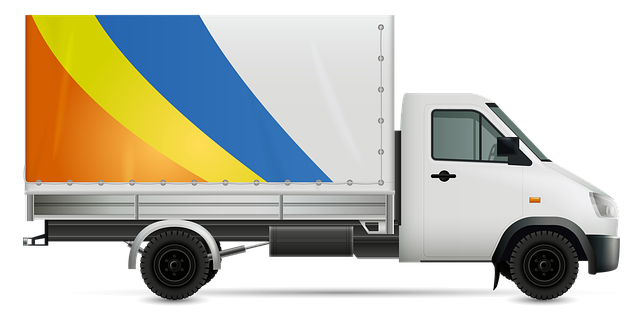Looking to register your car in California? It’s a straightforward process, but understanding the requirements and gathering the right documents is crucial. This guide will walk you through each step, from ensuring you meet the base criteria for car registration in California to performing a vital VIN verification. We’ll detail how to visit the DMV, complete the registration, and obtain your new license plate, all while emphasizing the importance of accurate VIN data.
- Understand the Requirements for Car Registration in California
- Gather Necessary Documents for VIN Verification
- Perform a Vehicle Identification Number (VIN) Check
- Visit the California Department of Motor Vehicles (DMV)
- Complete the Registration Process and Receive Your License Plate
Understand the Requirements for Car Registration in California

Before you begin the registration process, it’s crucial to understand what California requires for car registration. In this state, all vehicles must pass a vehicle identification number (VIN) verification process as part of the registration procedure. This involves confirming that your car’s VIN is accurate and matches the information on record with the Department of Motor Vehicles (DMV). A valid and accurate VIN is essential to ensuring your vehicle’s safety and identity, so make sure this step is completed correctly.
Additionally, for convenience, many residents opt for a mobile VIN verification or inspection service. These services allow you to get your car’s VIN checked remotely using a mobile device, streamlining the initial registration process. This modern approach saves time and effort, fitting seamlessly into today’s digital era.
Gather Necessary Documents for VIN Verification

To initiate the car registration process in California, you’ll need to gather several key documents, with a primary focus on verifying your vehicle’s unique identifier—the Vehicle Identification Number (VIN). This step is crucial as it ensures the accuracy and authenticity of your vehicle’s details. One efficient way to facilitate this verification process is by utilizing a mobile vin verifier or undergoing a mobile vin inspection. These services allow you to securely capture and transmit your VIN data, ensuring a smooth transition during registration.
When preparing for your trip to the California Department of Motor Vehicles (DMV), make sure to have original documents such as proof of ownership, which can be a certificate of title or a purchase agreement, along with valid identification like a driver’s license. Additionally, you might require other supporting documents based on specific circumstances, such as proof of insurance and emissions test results. A well-prepared folder for your mobile vin inspection or verification will streamline the registration process and potentially save you time.
Perform a Vehicle Identification Number (VIN) Check

Before registering your car in California, performing a Vehicle Identification Number (VIN) check is an essential step. This verification process ensures that the vehicle’s details match the information provided by the manufacturer and helps prevent fraud. You can conduct this vin inspection yourself using a mobile vin verifier or visit a designated service center for assistance. A simple online search for “mobile vin inspection” in California will provide you with numerous options to get this done swiftly and conveniently.
During a VIN verification, various crucial data points are cross-referenced, including the vehicle’s make, model, year, and specific identifying numbers. This ensures that your car is authentic and has not been reported stolen or had any outstanding issues. It’s advisable to compare the results with the documentation you have for your vehicle to ensure accuracy. By completing this step, you’ll be one step closer to legally registering your car in California.
Visit the California Department of Motor Vehicles (DMV)

To begin the process of registering your car in California, the first step is to visit a local California Department of Motor Vehicles (DMV) office. This crucial initial stage involves submitting essential documents and undergoing necessary inspections. During your visit, you’ll be required to present valid identification, proof of insurance, and the vehicle’s registration from its previous state of residency. Additionally, you’ll need to undergo a vin verification process, which can often be facilitated by a mobile vin verifier. This step ensures that the vehicle’s unique identifier, the Vehicle Identification Number (VIN), is legitimate and matches the make and model on record.
At the DMV, you’ll fill out relevant forms and pay the required fees for registration. A vin inspection may be conducted to cross-reference the VIN data with state records, ensuring everything is in order before finalizing your car’s registration. Be prepared to provide accurate information and original documents to streamline the process.
Complete the Registration Process and Receive Your License Plate

After you’ve gathered all the necessary documents and passed the vehicle inspection, it’s time to complete the registration process with the DMV. This involves submitting your forms, paying the required fees, and providing proof of insurance. Once your application is approved, a California license plate will be issued for your vehicle.
The final step in this process is receiving your license plate. It’s typically attached to your vehicle by a professional installer, ensuring it’s securely fastened. Remember that a properly displayed license plate is not just a legal requirement but also helps deter theft and enhances road safety through quick identification of vehicles. For added convenience, consider utilizing mobile vin inspection services or mobile vin verifiers, which can streamline the entire process, saving you time and potential headaches.
Registering a car in California involves understanding specific requirements, gathering essential documents for VIN verification, performing a Vehicle Identification Number (VIN) check, visiting the DMV, and completing the registration process. By adhering to these steps and ensuring accurate VIN verification, you’ll be well on your way to securing your vehicle’s registration in the Golden State.
